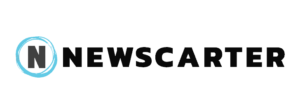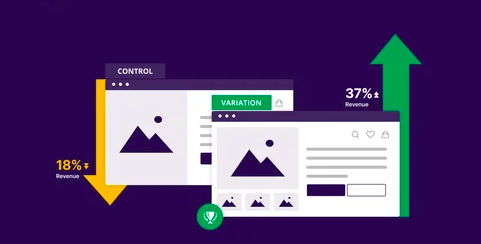Content change and access log audits are a must for those using headless CMS solutions. The final audit ensures accountability and transparency when it comes to secure content management. With content in a headless solution constantly being served via APIs across different websites and channels it’s even more critical to have the right activities and log audits in place and monitored to ensure no unauthorized adjustments are made, problems can be quickly addressed in comparison, and compliance standards are met across the board. This article assesses the activities needed to audit content changes and access logs in a headless CMS environment, providing a realistic approach to successful audit creation.
Why Auditing is Crucial in Headless CMS Environments
A headless CMS removes content from the presentation layer to functionality, delivering it through API calls. As a strong, more versatile option, however, it complicates the investigation of who did what, when, and where for CMS engagement, access, usage, edits, etc. Using a Sanity open-source alternative can offer flexible auditing capabilities. A proper audit can let the organization know who edited which piece and when, who accessed which piece and for how long. This is important for remaining compliant with internal policies and external governance frameworks such as GDPR and SOC 2, minimizing time to resolution for security breaches or unauthorized activity detection, and maintaining content integrity.
Understanding Content Auditing Capabilities in Headless CMS
Many modern headless CMS offer auditing and logging features out of the box. For instance, a headless CMS will log who changed what and when automatically, meaning the timestamp when content is created or adjusted, who creates, changes, or deletes content, what content is created or deleted, and if the action is a change or a creation. In addition, logs exist that note changes to metadata, who has permission to view certain content, and configuration changes within the application itself. Therefore, auditing is simple and based upon the multitude of logs to determine what went wrong or how to remedy a mistake, what content was adjusted over time in order to justify compliance efforts or when a third-party auditor needs to view evidence of meeting regulatory requirements.
How to Audit Content Changes Effectively
The most effective way to audit content changes is to establish uniform, consistent standards by which content management systems (CMS) audit logs can be reviewed over time. For instance, an entity needs to decide what kinds of things will be audited, major changes to content, creation of content, deletion of content, access to locked/discretionary content, etc. Over time, if logs are audited, for some reason or another, it will be easier for admins to gauge potential red flags and inappropriate behaviors. In addition, entities should compile a log of their own audits over time to note any trends, report any inconsistencies, and show continued compliance for third-party audits or assessments.
Monitoring Access Logs to Ensure Security
Another equally important step involves reviewing access logs for a headless CMS. Access logs keep track of every login by a user, every attempt to access information behind a paywall, and every use of an API. Security teams can assess these logs for anomalous access behavior, successful logins that shouldn’t have happened, and even brute force efforts to break down a lock screen. When access logs are reviewed on a regular basis, a company can safeguard itself against inappropriate access and assess in real time if intrusions are occurring, strengthening the security of the CMS installation.
Leveraging Automation and Real-time Alerts
Increased efficiency and responsiveness are a result of the automation of the auditing and monitoring process. For instance, if the automated monitoring occurs directly with the headless CMS, it can review logs in real time, identify anomalies, and automatically notify security teams or administrators when inappropriate actions occur. These real-time notifications give the organization a chance to counteract potential incidents while still on the website reducing incident time for potential attackers. In addition, automated auditing reduces the chances of human error, provides consistency, and helps maintain that auditing occurs at the same planned intervals for improved compliance.
Securing Audit Logs and Ensuring Integrity
Furthermore, a critical aspect of auditing is safeguarding the audit and accessing of log files. Hackers frequently target these files to expunge evidence of their activities or generate falsified access entries. Therefore, organizations should secure these files via encryption, robust access control systems, and safe storage areas. Moreover, if these files are compromised or deleted, the organization becomes complacent even unintentionally which can be dangerous, for it is essential for all abnormalities to be recorded and assessed, and this can lead to noncompliance.
Conducting Regular Log Reviews and Compliance Checks
Audit log reviews promote continuous compliance and access control. Companies can schedule periodic audits weekly, monthly, or quarterly depending on the risk level and regulatory requirement to assess content and access logs over time. Periodic compliance audits ensure that users comply with the policies set forth in the first place, that the proper permissions are rendered where necessary, and that if changes are made or access is granted outside of assessed and approved boundaries, such actions are flagged and remedied in a timely fashion. Log assessments over time ensure compliance with the ability to immediately change security efforts.
Using Audit Trails for Incident Response and Forensics
Incident response and forensics are made easier with an audit trail. If something goes wrong, content going missing, being incorrectly edited, security loopholes where content is deleted, digital assets, or data going missing or exposed the faster the team can recreate the scene, the better. Understanding what was edited or deleted at first with the intention of accidental (or malicious) action and where it came from does not only guide what needs to be done to fix the action, but it brings in internal quick and productive team action. The more the team knows about what’s happened, the sooner they can address the situation instead of experiencing excessive downtime. Furthermore, this audit trail contributes to reports addressing security and retention issues.
Integrating with External Logging and SIEM Systems
Integrating headless CMS audit logs with third-party logging systems such as Security Information and Event Management (SIEM) applications ultimately broadens the scope of security efforts even further. Third-party logging systems aggregate, control, and analyze log data from multiple sources and provide organizations with a centralized awareness of internal security happenings from multiple sources. Thus, when a CMS log is added to the collective SIEM universe, security teams can detect more profound risks, conduct extensive investigations, and possess a universal picture of digital operations. Therefore, ideally, this promotes more extensive security efforts and more proactive measures to ensure detection and response occur almost instantly.
Ensuring Audit Processes Align with Regulatory Requirements
Organizations must ensure that their own auditing procedures are relative to compliance (GDPR, HIPAA, or SOC 2). For example, every regulatory framework stipulates the need for audit trails and log retention. Therefore, every organization must justify its auditing procedures by explicitly stating how and when logs will be created, for how long they are held and secured, and how frequently auditing occurs. Such consistency ensures ease of compliance checks, successful audits, and reduced risk of failing to comply with regulatory mandates. In addition, instituting and maintaining such auditing procedures for compliance purposes shows a company that is compliant relative to general data security and privacy, and benefits the confidence of consumers, partners, and compliance-based agencies alike.
Training Teams on Effective Audit Practices
Ultimately, training CMS users and management about appropriate auditing practices ensures compliance and security awareness will be achieved. Periodic training sessions ensure the team is up to date on auditing expectations, reading logs, and identifying and reporting any potentially red flags. Compliance training ensures a security mentality where team members feel encouraged to assist with content stewardship, data access and privacy, and compliance efforts. A well-trained, knowledgeable staff ensures appropriate auditing equilibrium and reaction to security breaches, which makes the entire enterprise more secure.
Conclusion
The need to audit who changes content and when/how it is accessed and who has access to it in a headless CMS is related to data security, regulatory requirements, and content protection. Since more and more businesses use a CMS that utilizes an API to render information and content across multiple channels (instead of a traditional web browser option), it’s increasingly complicated to render and track such engagement. An audit allows the administrator to see everything operating in the background and on the forefront from creation to deletion to access by different users (potentially non-human bots) and allows them to determine the source of the complication, data breach, unauthorized access, etc. and troubleshoot it quickly and effectively.
An organization would meet the demands of audits best through the automatic logging features naturally integrated into most modern headless CMS platforms. These logging features contain essential metadata like time and date stamps, who modified, who authorized, what was changed or removed, etc. However, to supplement such transparency, scheduled monitoring systems can greatly assist an organization in providing review assessments of content to ensure no malicious activity or inconsistencies exist. Automated systems limit access logs a person must manually review, reduce human error, and provide immediate notification of threats to the proper channels for resolution and increased security.
Yet another component of a thorough auditing strategy is the safeguarding of the logs. Audit logs contain a great deal of sensitive information and, naturally, where there is so much at stake, the logs are vulnerable to cyber criminals attempting to erase nefarious actions taken that are not supposed to be undertaken. Safeguarding against such crimes occurs through rigorous encryption, levels of access, and storage solutions to prevent tampering, eradication, or exposure. When logs are safe and only accessible to those who truly have a need to know they are more reliable as evidence in forensic investigations and compliance audits, providing legitimacy to an otherwise successful and transparent undertaking.
Audit effectiveness comes from frequent formal log review. Such scheduled periodic audits should be established at a bare minimum, weekly, monthly, or quarterly (depending upon organizational risk assessment and compliance requirements) to maintain constant access and oversight of CMS activity so that compliance failures and security breaches can be detected earlier rather than later. In addition, over time, an organization can determine whether mere risk or unauthorized activity exists at the time of these periodic reviews and logs are requested, something that is not usually obtained unless logs are checked.
Furthermore, over time, an organization may be able to see trends, generalities, and projections that can help it take proactive measures. Logs reviewed regularly demonstrate an organization’s proactive measure efforts for compliance and security. In addition, integration with third-party Security Information and Event Management (SIEM) systems boosts an organization’s security monitoring and threat detection efforts.
SIEM tools aggregate, correlate, and analyze data from multiple sources for security teams to access a single pane of glass view of threats and incidents. By integrating CMS audit and access logs into their SIEM systems, organizations more quickly detect complex, multi-faceted threats, reduce incident response times, and bolster security effectiveness across the entire technological ecosystem.
This is accomplished by also effectively aligning the audit with relevant compliance frameworks. For example, GDPR, HIPAA, SOC 2, or any of the potential compliance requirements relevant to the organization. This is done by noting retention requirements as static requirements for logs, the scope of the audit, and more formalized auditing procedures focusing on compliance. Effective alignment not only fosters compliance audits and reduces the chance of regulatory noncompliance but also demonstrates due diligence to requirements that help support resiliency to compliance-based third-party audits and customer/partner requirements. They want to know you’re doing your due diligence, and compliance requires it.
Ultimately, fostering a compliance and security awareness culture helps bolster an effective audit process. When users expect audits and know how to read audit logs or apply extensive logging capabilities even in the face of suspicious behavior they can not only help prevent security incidents but also provide better legitimacy for justification if something done is called into question during the audit process. Security awareness training ensures that everyone understands what they can do to secure the data while compliance is an integrated process that requires everyone to provide input.
Ultimately, these improvements in transparency, accountability, and proactive security management can be achieved through the use of a strong, all-encompassing audit trail for edits and access logs. Auditing provides assurance for what was done (or not), real-time troubleshooting for security issues, and future compliance over time. Organizations can best handle all of the above moving forward by having safe logins, checklists/structured reviews of logs, access control with third-party integrations, compliance with oversight agencies, and consistent training to know what best practices should be followed for content security, integrity, and compliance in an increasingly complicated digital world.































